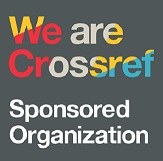RHETORICAL MOVES IN INTRODUCTIONS: PROMPT-BASED WRITING TRIAL RESULTS
Abstract
Keywords
Full Text:
PDFReferences
Cassandra, N. W., Fithriani, R., Febriyanti, R. H., & Mukminin, A. (2024). Becoming Scholarly Writers through Professional Learning Community: A Phenomenological Case Study of Indonesian Teacher-Educators. LEARN Journal: Language Education and Acquisition Research Network, 17(1), 8–29.
Chapman, M. (2016). The effect of the prompt on writing product and process: a mixed methods approach. University of Bedfordshire.
Cheong, W., & Hong, H. (2023). The Impact of ChatGPT on Foreign Language Teaching and Learning: Opportunities in Education and Research. Journal of Educational Technology and Innovation, 37–45.
Fauzi, F., Tuhuteru, L., Sampe, F., Ausat, A. M. A., & Hatta, H. R. (2023). Analysing the Role of ChatGPT in Improving Student Productivity in Higher Education. Journal on Education, 5(4), 14886–14891. https://doi.org/10.31004/joe.v5i4.2563
Ganie, R., Sinar, T. S., Syahputra, F. P., & Veronica, A. (2025). Prompt writing and linguistic syntax collaboration in power-writing AI utilization to assist introduction writing. Multidisciplinary Science Journal, 7(10). https://doi.org/10.31893/multiscience.2025341
Huang, J. C. (2014). Learning to write for publication in English through genre-based pedagogy: A case in Taiwan. System, 45, 175–186. https://doi.org/10.1016/j.system.2014.05.010
Hyland, K. (2004). Disciplinary Discourses: Social Interactions in Academic Writing (2nd ed.). University of Michigan Press.
Hyland, K. (2007). Genre pedagogy: Language, literacy and L2 writing instruction. Journal of Second Language Writing, 16(3), 148–164. https://doi.org/10.1016/j.jslw.2007.07.005
Hyon, S. (2001). Long-term effects of genre-based instruction: A follow-up study of an EAP reading course. English for Specific Purposes, 20(4), 417–438. https://doi.org/10.1016/S0889-4906(01)00019-9
Imran, M., & Almusharraf, N. (2023). Analyzing the role of ChatGPT as a writing assistant at higher education level: A systematic review of the literature. Contemporary Educational Technology, 15(4), ep464. https://doi.org/10.30935/cedtech/13605
Kroll, B. & Reid, J. (1994). Guidelines for Designing Writing Prompts: Clarifications, Caveats, and Cautions. Journal of Second Language Writing, 3(3), 231-255.
Rahman, M., Darus, S., & Amir, Z. (2017). Rhetorical Structure of Introduction in Applied Linguistics Research Articles. International Journal for Educational Studies, 9(February), 69–84.
Swales, J. M. (1990). Genre Analysis: English in Academic and Research Settings. Cambridge University Press.
Swales, J. M. (2004). Research Genres: Explorations and Applications. Cambridge University Press. https://doi.org/10.1017/CBO9781139524827
Weldy, T., Maes, J., & Harris, J. (2014). Process and practice: Improving writing ability, confidence in writing, and awareness of writing skills’ importance. Journal of Innovative Education Strategies, 3(1), 12–26. http://www.intl-academy.org/wp content/uploads/2016/11/Weldy_Maes_Harris-JIES-Fall-2014.pdf
Yu, Z., & Liu, M. (2016). A Contrastive Study on Generic Structure of Introduction to English Chemistry Research Articles: L1 Chinese Student Writers versus L1 English Published Writers. International Journal of English Linguistics, 6(5), 112. https://doi.org/10.5539/ijel.v6n5p112
Zein, T. T., Sinar, T. S., Nurlela, & Syahputra, F. P. (2023). Rhetorical Structure in Scientific Article Introduction Section Written by Tertiary Students. Celt: A Journal of Culture, English Language Teaching & Literature, 23(1), 138–154. https://doi.org/https://doi.org/10.24167/celt.v22i2.5045
DOI: https://doi.org/10.30743/ll.v9i1.11122
Refbacks
- There are currently no refbacks.
Fakultas Sastra
Universitas Islam Sumatera Utara (UISU), Medan
Jl. Sisingamangaraja Teladan Medan 20217
Telp. (061) 7869911, e-mail: language_literacy@sastra.uisu.ac.id









